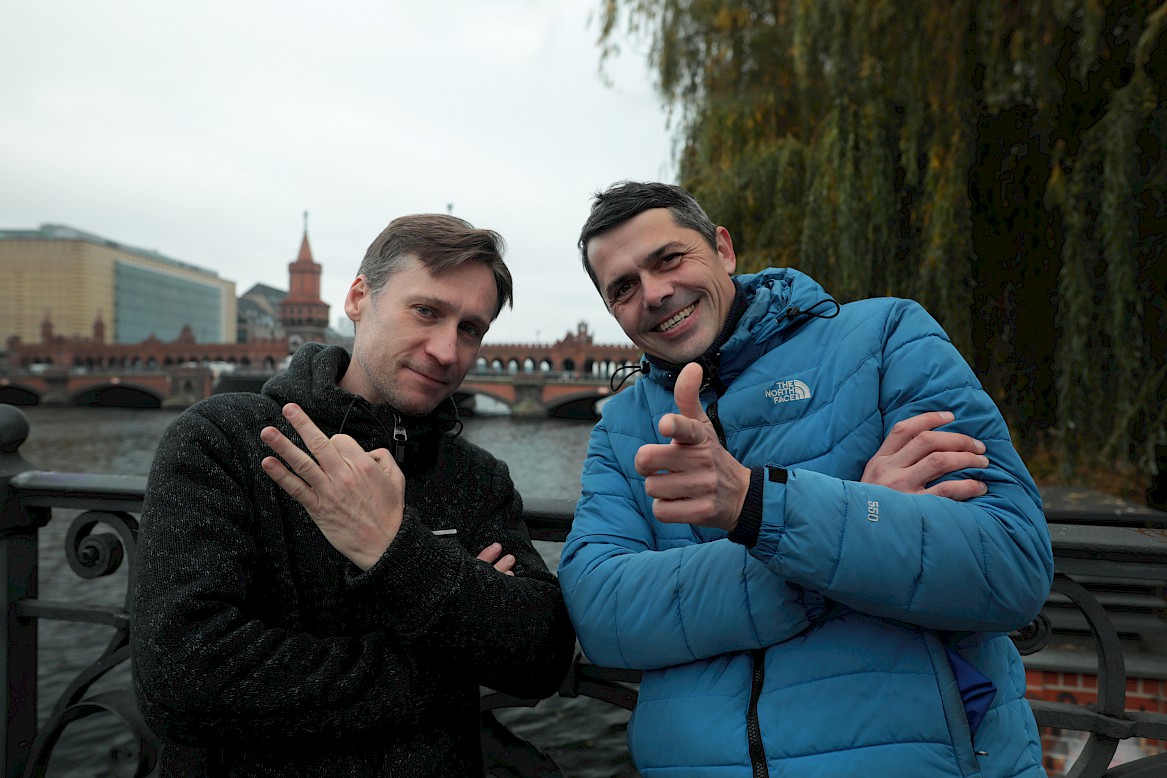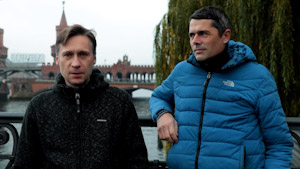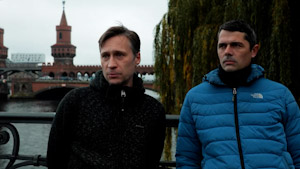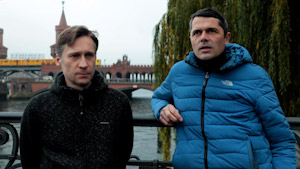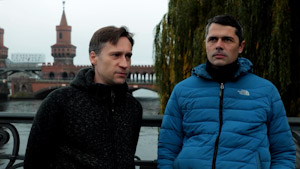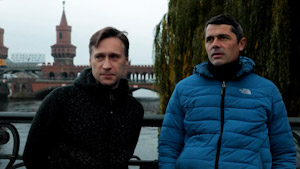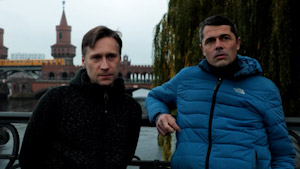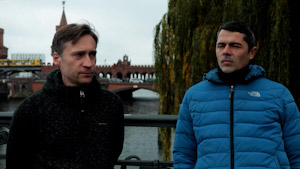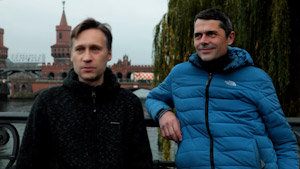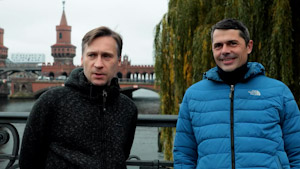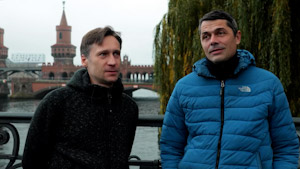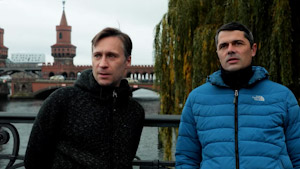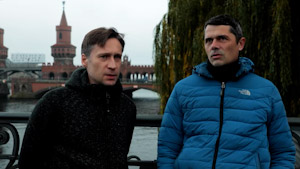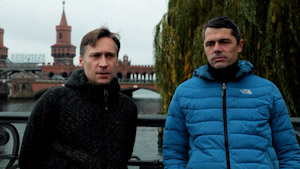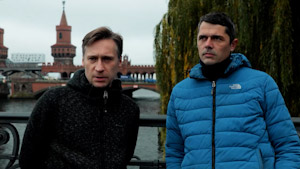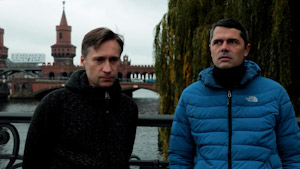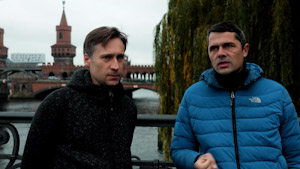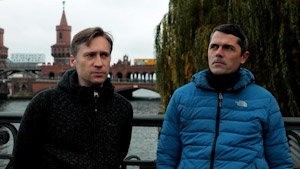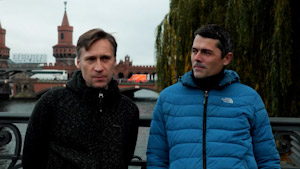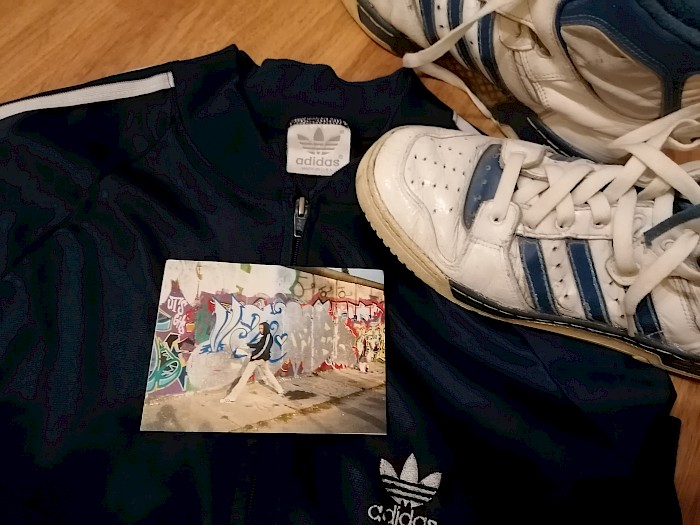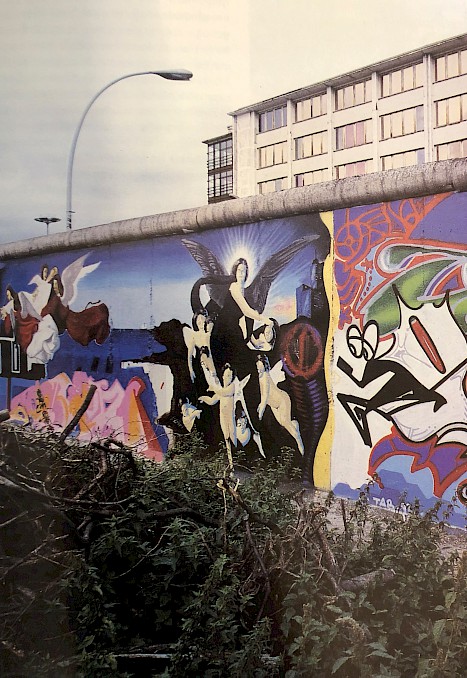"Right after the Berlin Wall came down, anything was possible. And it was 'our Berlin'. You just always had the feeling, it’s mine too."
Erik Mahnkopf was born in East Berlin in 1976. As a child, he imagined West Berlin to be a beautiful, colourful other world. So, when the Wall came down in November 1989, he was initially disappointed by the other part of the city. But seeing the painted west side of the Wall left a lasting impression on him. He started spraying graffiti and style writing in 1990, seeing it as a liberating act. Painting on the Wall, which he had hitherto associated only with fear, compensated for all the previous constraints. In the 1990s he went on the "Graffiti goes East" tour, bringing style writing to Eastern Europe, and sprayed graffiti worldwide from Russia to China and Indonesia. Since 2010 he has painted large-format works with his WENU Crew and set up a Berlin agency designing art for building facades.
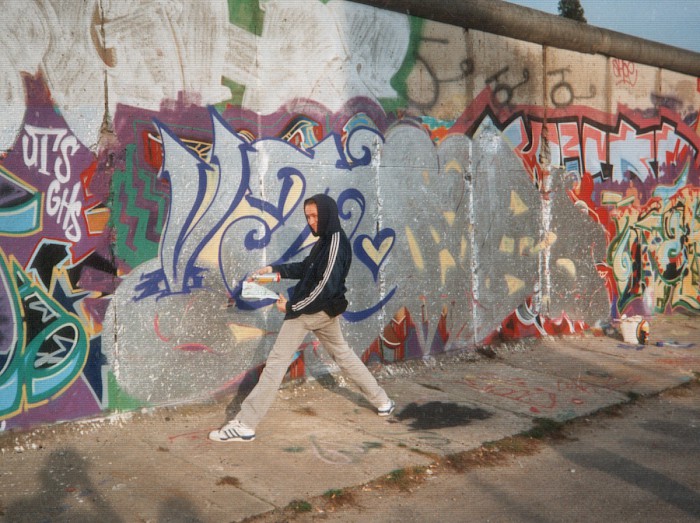
"It was all part of exploring the city: You climbed in everywhere and painted on everything. You took on all those places. It was all about spaces and appropriating them."
Daniel Kensbock was born in West Berlin in 1970. He grew up in Kreuzberg, near what is now May-Ayim-Ufer (formerly Gröbenufer), overlooking the border strip. He often watched the patrol boats on the Spree while feeding the ducks but only had a vague idea of what East Berlin was. Having discovered graffiti through breakdance in the 1980s, he sprayed on the Wall in Kreuzberg. When the Wall came down, he gained whole new freedoms. Suddenly it was possible to paint on the other side of the Berlin Wall – even on the other side of the river in Friedrichshain, which he had always seen from his window. Here, young people from East and West Berlin painted on the "West Side Gallery" together with internationally renowned graffiti artists. The fall of the Wall gave the scene new impetus. Style writing entered a new era and Daniel Kensbock played a significant role.
